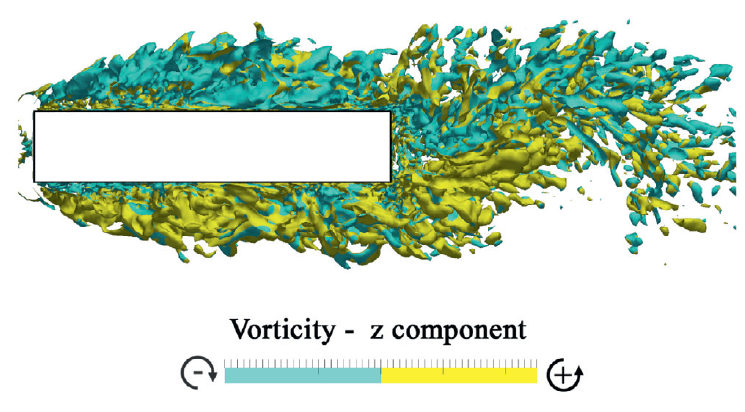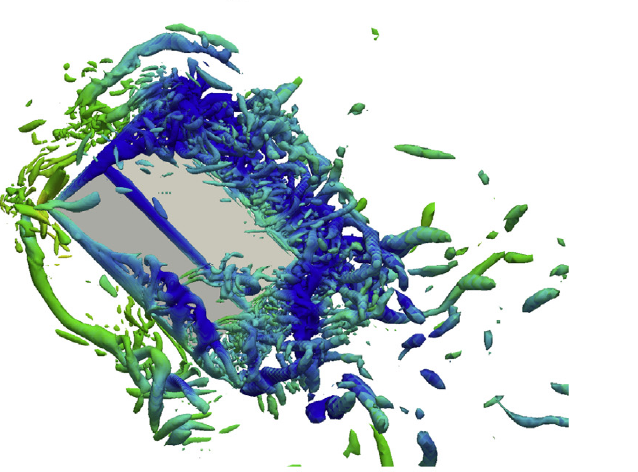The motion of viscous fluids can be fully characterized by means of the Navier-Stokes equations. Unfortunately, due to phenomena related to the instability of the fluid flow, such equations usually lead to extremely complex solutions characterised by turbulent fluctuations. Such fluctuations are always three-dimensional and present time and length scales often ranging various orders of magnitude. Due to such features, the numerical simulation of fluid flows becomes extremely demanding from the computational point of view and, indeed, incompatible with design needs (in terms of both time and cost). Such observation is true even when modern supercomputers are adopted and it is not expected to be overcame in the next future.
In order to solve such problem, turbulence models have been introduced. The main idea is to avoid a complete resolution of the Navier-Stokes equations and represent only the mean flow and/or the larger eddies. From this perspective the fine structures of turbulence (small eddies) are taken into account only with respect to their effects on the larger flow structures. Such operation leads to modifications of the Navier-Stokes equations.
It is thus important to notice that, when CFD techniques are used, the obtained numerical solution is not a faithful representation of the true physical phenomenon because the governing equations have been deliberately modified. The extent to which CFD analyses are able to reproduce phenomena encountered in Computational Wind Engineering applications should be always carefully verified.

The flow around bluff bodies is characterised by specific features that can be extremely challenging for numerical simulations. For example, the way the flow is detached by sharp edges in the proximity of corners, although related to localised phenomena, can deeply influence the global flow arrangement. The BARC project clearly highlighted the high variability of the results that can be obtained by applying CFD techniques even in relatively simple cases. A deep understanding of the flow organisation around bluff bodies, the individuation of the key parameters which contribute to the scatter of the obtained results and the development of best practice guidelines is of primary importance for the development of Computational Wind Engineering. The picture shows an overview of the flow organisation around a 5:1 rectangular prism immersed in a turbulent flow.

In the majority of Civil Engineering applications, the considered structures are close to the ground and, so, are immersed in the Atmospheric Boundary Layer (ABL). Due to the interaction with the ground and the surrounding bodies, the incoming wind presents specific characteristics which must be appropriately taken into account in numerical simulations. Between them the vertical variation of the time-averaged wind speed, the turbulence spectral content and its spatial correlations are the most important aspects that need to be considered.
Such features are not easily reproducible in CFD simulations but might strongly affect the obtained design values. The study of the flow arrangement in the proximity of bluff bodies immersed in the ABL is currently an extremely active research topic, fundamental in order to validate LES as a design tool. The picture shows the instantaneous distribution of vortices around a low-rise building immersed in the ABL (experimental data available in the TPU Aerodynamic Database).